
We're excited to announce that the Corner Shop: NightShift demo will launch on Steam in late July. This early build introduces key elements from the upcoming Early Access version, offering a playable first look into the game's tone, systems, and story.
SCREENSHOT 1 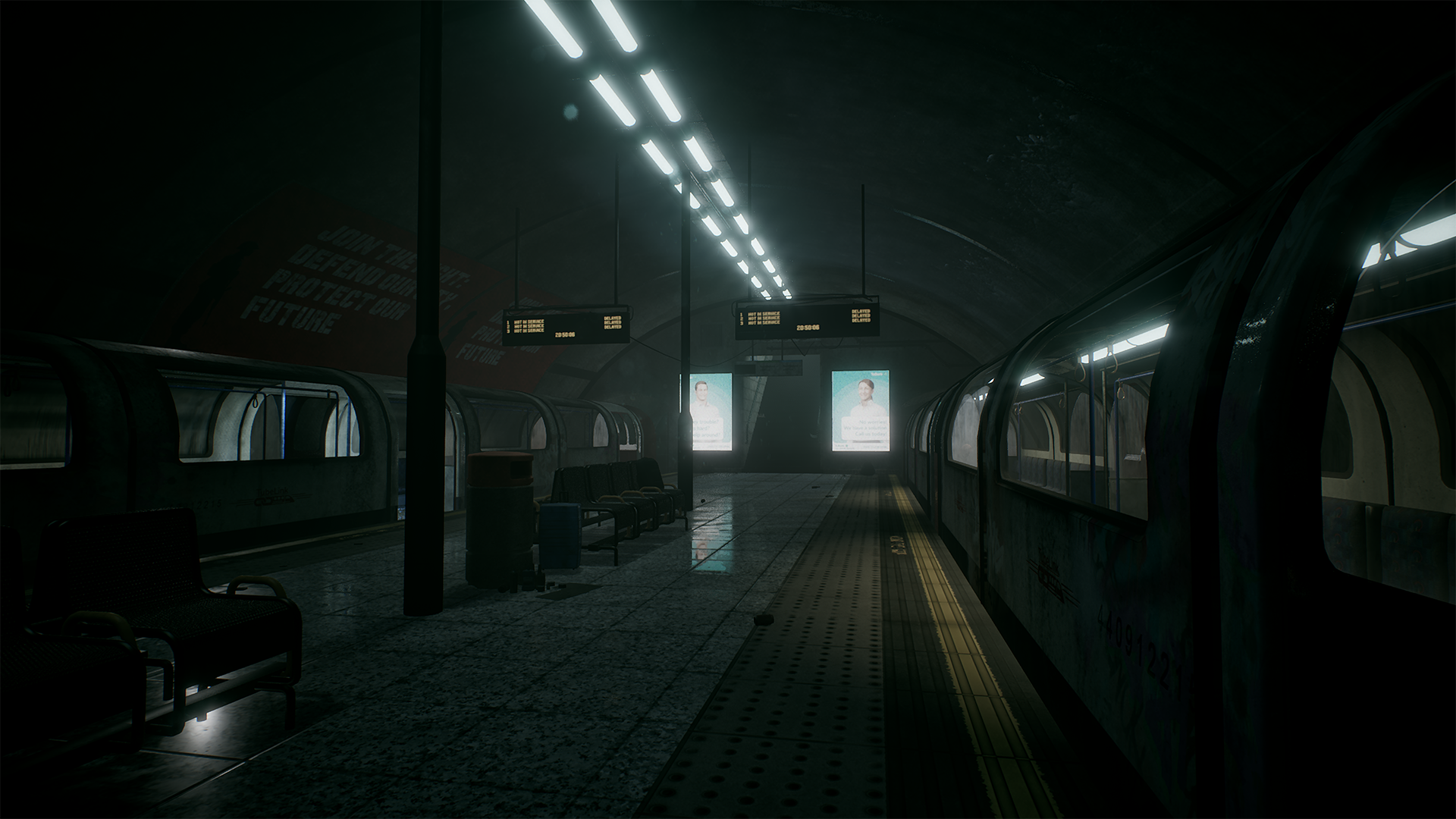
\[SCREENSHOT 2] 
\[SCREENSHOT 3]
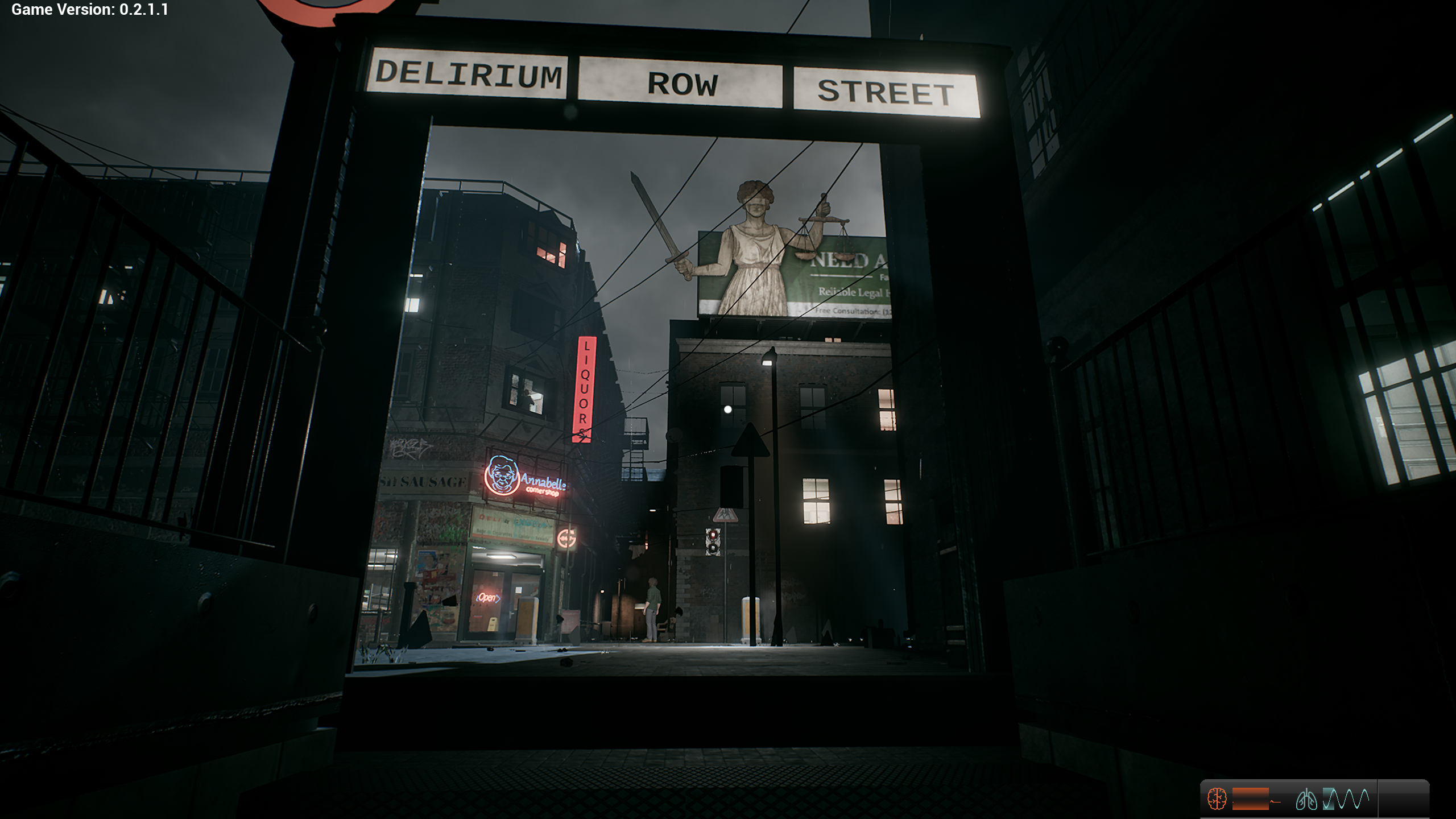
Introduction to Adam Callahan's story – a man trying to rebuild his life after a personal collapse.
A slow-burn, immersive psychological horror atmosphere, set during night shifts in a lonely corner store.
Early versions of the store mechanics, interaction systems, and the in-game phone and SMS features.
A focus on narrative tension, subtle unease, and gradually unlocking layers of gameplay.
The demo will be permanently available and regularly updated based on player feedback.
Leading up to the demo release, we’ll be publishing regular devlogs where we’ll dive deeper into the game's mechanics, inspirations, design choices, and behind-the-scenes development.
If you're curious how we mix mundane routines with psychological dread – stay tuned.
The demo will be available in 16 languages, with full English voice-over.
If wishlist numbers grow, we plan to expand voice-over support to more languages.
Alongside the demo, we’ll be releasing:
A brand new official trailer
Fresh in-game screenshots
Updated gameplay footage
Join our Discord to chat with the team and other players. Your feedback directly impacts development:
You can also share your thoughts on the Steam Community forum – we read everything.
Wishlists help small dev teams more than you might think.
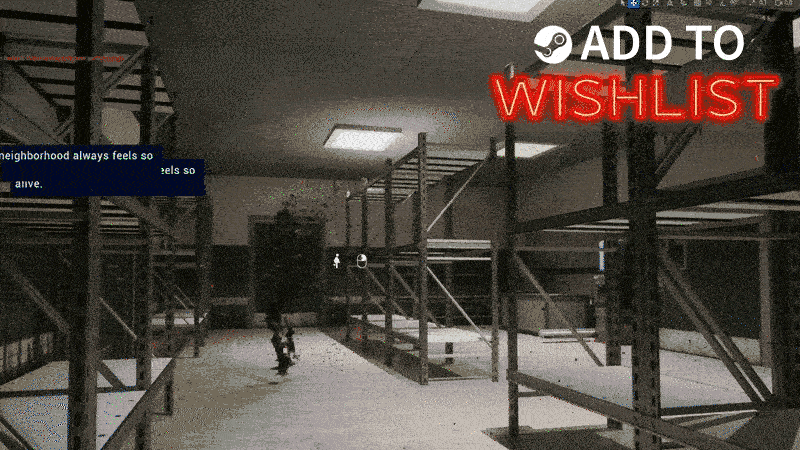

Hey hunters!
Our names are Annette and Warren Hobart and today we hope to teach you a thing or two about how our Indigenous culture inspired the narrative and setting of the newest map, Alberta Hunting Preserve.
We are a proud Métis woman from Alberta and a Status First Nation man. Together, we bring generations of lived experience as Registered Trappers, land users, and cultural knowledge holders. As consultants for theHunter: Call of the Wild, we’ve worked closely with the team to ensure the game authentically represents Indigenous cultures—specifically the Métis and Cree Peoples of Alberta.
Throughout our careers, we've worked tirelessly to educate individuals, groups, institutions, and even other Nations about the deep Indigenous connection to the land.
For us this work is about ensuring Indigenous choices are heard, respected, and included in the spaces where decisions and narratives about us are being shaped. It’s about shifting power, centering Indigenous knowledge, and creating environments where our communities are not just consulted, but are leading the way.
In Canada, the term Cree refers to one of the largest and most widespread Indigenous Nations in the country. Cree people have a distinct language (called Nehiyawewin), culture, and traditional territories that span from Alberta to Quebec. The Cree Nation is made up of many different communities, each with their own governance structures and local practices, but all rooted in a shared worldview that emphasizes respect for the land, spirituality, family, and community.
When someone is described as a Status First Nation, it means they are legally recognized under the Indian Act, a federal law in Canada that governs many aspects of Indigenous life. This status is recorded in a government registry, and it affirms the person’s identity as a member of a federally recognized First Nation. It also means they have specific rights and responsibilities tied to their Nation and to the treaties signed between First Nations and the Crown (the government of Canada).
While “Status” recognition offers certain legal protections, it does not define the strength or legitimacy of someone’s identity or connection to their culture. Many Indigenous people—both Status and non-Status—live deeply rooted lives in their traditions, languages, and lands.
Métis culture is a rich and distinct blend of First Nations and European ancestry, with our own language, governance, and worldview. We have a deep connection to the land, strong family networks, and a long-standing history of resilience, trade, and cultural expression—through music, storytelling, beadwork, and traditional land use.
Alberta is unique in Canada as the only province with legislated Métis Settlements—communities with a recognized land base and local governance.
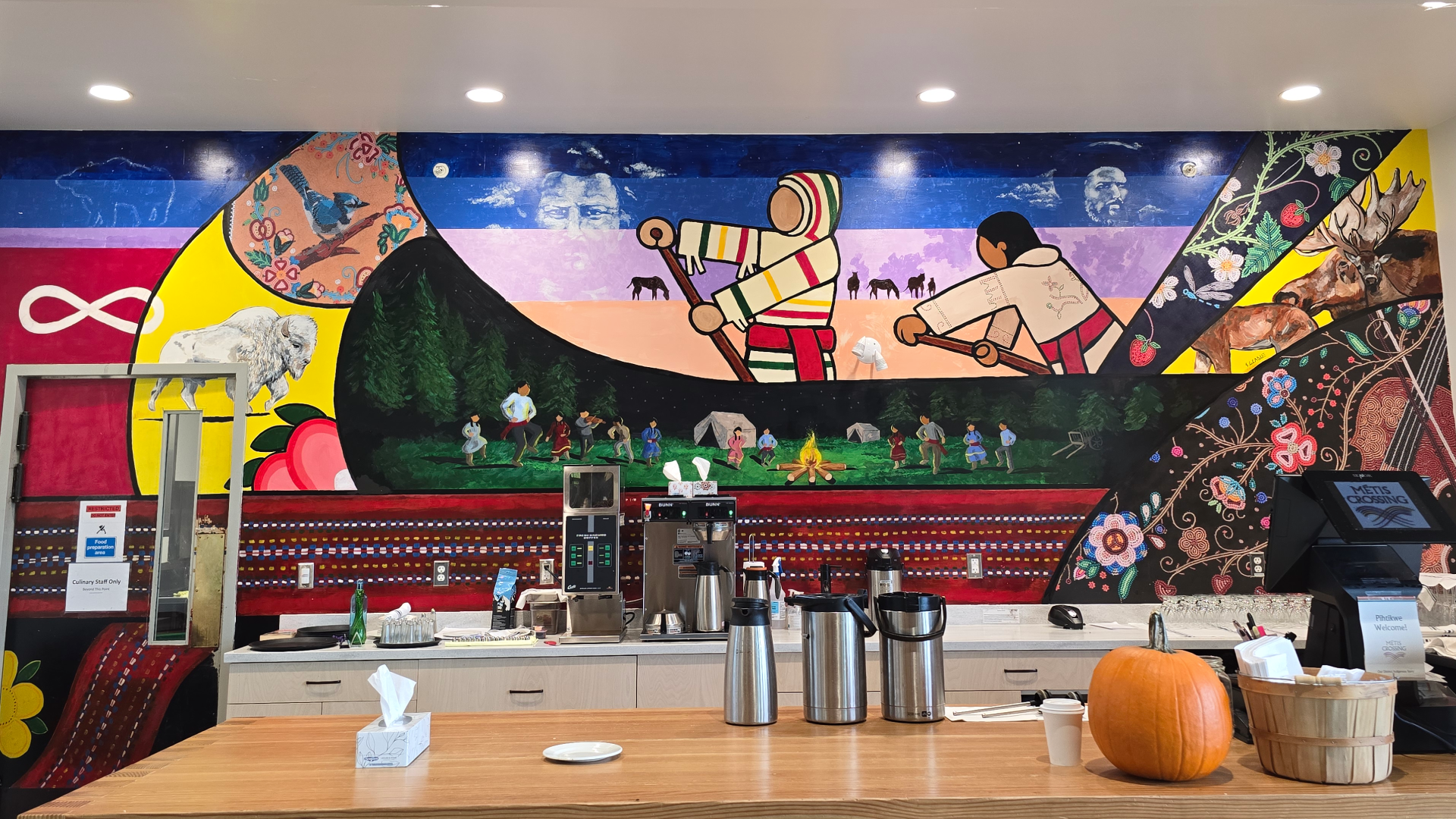
That uniqueness brought about some meaningful and, at times, complex conversations with theHunter team. We explored what it would look like to create a hypothetical land base in the game—one that is Indigenous-managed and culturally grounded. This idea opened the door to discussions around the realities Métis and First Nations people in Alberta face, particularly the challenges and opportunities of working together across different Nations, histories, and priorities. The result is a storyline that feels realistic. It reflects the strength, pride, and sometimes the tension that can come with inter-Nation collaboration.
For us, hunting and trapping aren’t hobbies or recreational activities—they are part of a deeply rooted way of life, passed down through generations of Indigenous knowledge, experience, and respect for the land. As Registered Trappers in Eastern Alberta, we live closely with the land and pay attention to everything it tells us—watching the signs, listening to the animals, and understanding the shifts in the environment.
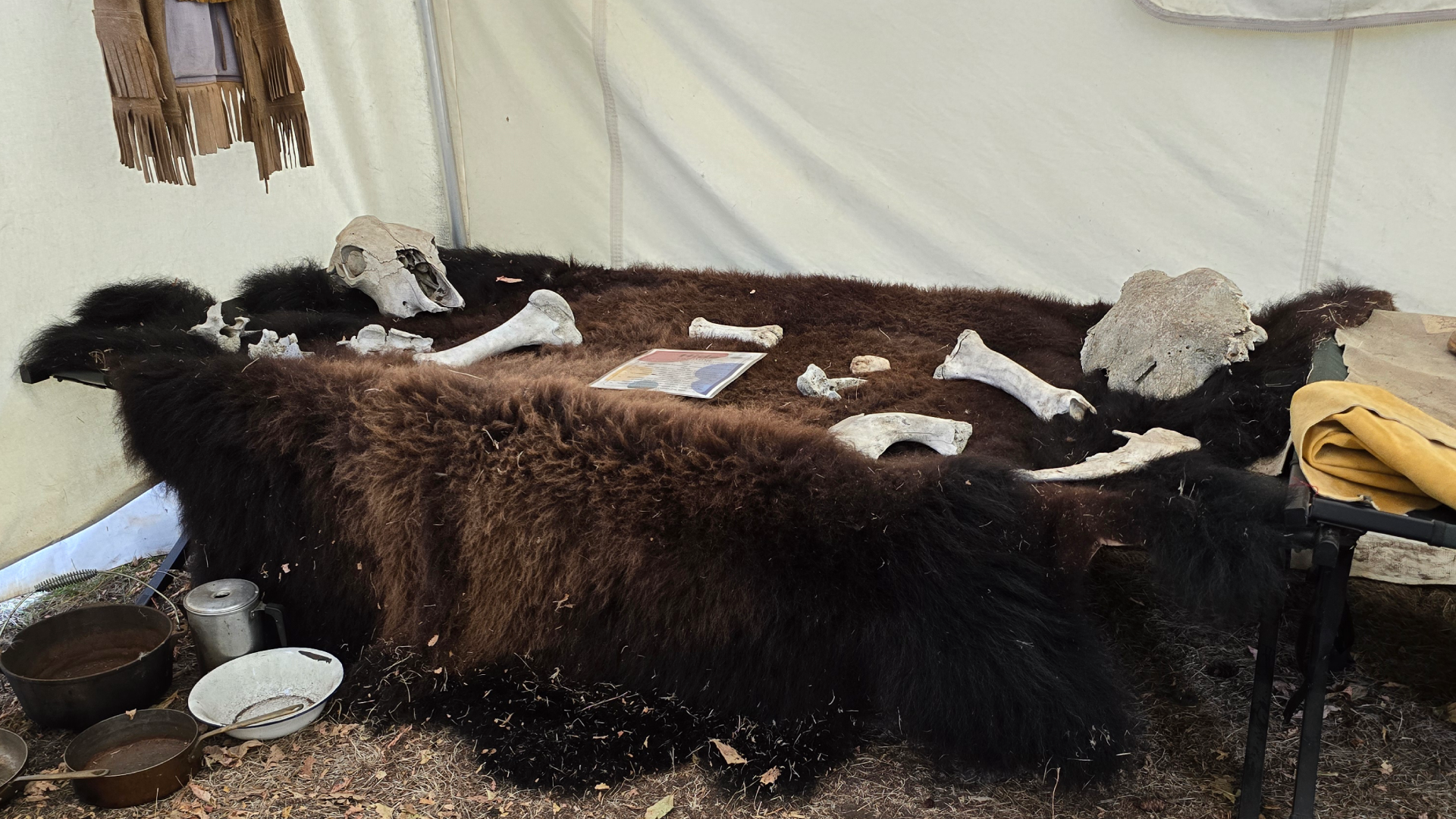
Each season begins with prayer and ceremony. Before we set a trap or take a harvest, we offer thanks to the Creator and the spirits of the land. We acknowledge the animals we may take and show respect for the lives they give. These ceremonies help ground us in humility, gratitude, and spiritual responsibility. We don’t take lightly the fact that we are entering into a relationship with the land and its creatures.
We watch for trends on the land—the health of the animals, the balance of ecosystems, and signs of disease or overpopulation. If we see a species thriving beyond its natural balance or struggling with illness, we adjust where and what we trap to help support overall environmental health. Trapping is not just about harvesting—it’s about monitoring and maintaining the land in a way that supports all life.
We also harvest traditional medicines, plants, and roots—like rat root, wild mint, sweetgrass, and willow bark—which help us care for our own health and continue the practices our ancestors relied on. These are part of our seasonal routines, and they carry deep cultural significance.
One of our oldest guiding tools is the lunar calendar, or moon cycles. Each moon—like the "Falling Leaves Moon" or the "Hard Frost Moon"—carries teachings about when to trap, when to gather, and when to rest. The moon teaches us rhythm and timing, and it helps us live in harmony with the natural world. We trap with the moon, not the clock.
As Indigenous consultants for Askiy Ridge, our role has been deeply immersive and integral to the development of the preserve. From the very beginning, Warren and I were brought in not just as advisors, but as cultural stewards—ensuring every detail reflects the true spirit, traditions, and knowledge systems of the Indigenous peoples of Alberta, specifically the Métis and Cree communities.
From the portrayal of the wildlife and landscapes of Alberta, to music, traditional hunting methods, the main hunting lodge and cabins, characters, and storylines, we’ve infused the game with real traditions, perspectives, and practices passed down through generations. We’ve helped shape the characters, their voices, and even the naming conventions of the game’s regions—making sure they are grounded in place, history, and meaning.
Our input has helped shape both the interior and exterior design of the main hunting lodge and cabins—ensuring they reflect the practical and cultural elements of Indigenous life in Alberta. We spent a lot of time working with the team to ensure that every detail reflected the lived experience of Indigenous land users—particularly Métis and Cree families with deep roots in the fur trade era.

One important feature we shared was the traditional tongue and groove method used in cabin building. This is a wood joinery technique where one board has a groove cut into it and another has a corresponding “tongue” that fits snugly inside. It creates a strong, weather-resistant seal without the need for nails or screws, which was essential for building warm and sturdy cabins in remote areas using limited tools. This method is still used today in many traditional trapper cabins across Alberta.
We also guided the team in adding meaningful interior touches—like handmade furniture, woven rugs, trade blankets, and leatherwork—items commonly found in Indigenous homes. These were not just decorative, but functional and often created by hand using local materials. The presence of beadwork, antler-handled tools, and traditional artwork helped give each cabin a sense of story and identity.
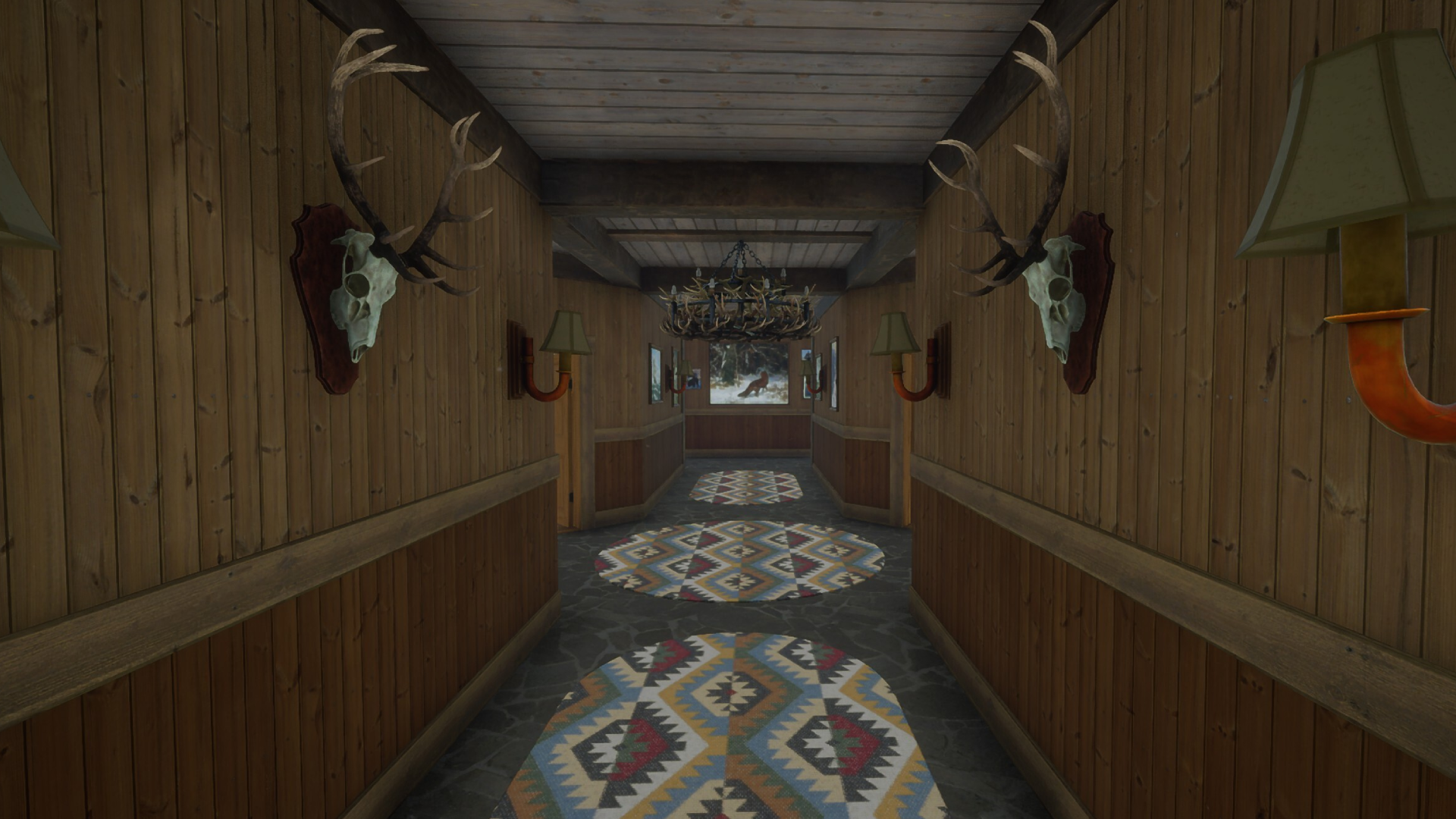
These cabins represent more than shelter; they reflect self-sufficiency, resilience, and pride in our way of life. The team didn’t just design a space—they captured the spirit of home for many Indigenous people who’ve lived and worked on the land for generations.
We also worked with the design team to ensure the characters are authentic in their appearance, including their clothing, gear, and mannerisms. Warren and I were deeply involved in shaping the characters to ensure they reflect real Indigenous people—not stereotypes or generic representations. From their clothing and physical appearance to their personalities, backstories, and ways of speaking, we worked closely with the team to build characters that are rooted in authentic Métis and Cree worldviews.
Janine Armstrong, main character of Askiy Ridge’s story.
We discussed traditional and practical clothing styles—things like moccasins, sashes, fur-lined jackets, and other pieces influenced by both the fur trade and land-based living. These aren’t just costumes—they reflect identity, utility, and cultural pride. We also paid close attention to the characters’ tools, gear, and accessories, ensuring they reflect the resourcefulness and craftsmanship of Indigenous trappers and hunters.
But beyond appearance, we helped shape the character arcs and personalities. We emphasized the importance of humility, respect for the land, kinship ties, and traditional knowledge. For example, we guided the team on how an Elder character might speak or carry themselves—with patience, wisdom, and humor—and how a younger character might be in a learning role, full of questions, trying to reconnect with the land or their culture.
We also made sure that characters weren’t just placed in the story—but that their roles had cultural depth and meaning. Each character represents something larger than themselves—whether it’s the role of knowledge keeper, hunter, helper, or protector of tradition. Even their emotional expressions and dialogue were shaped to align with the way Indigenous people speak—grounded, relational, and often layered with teaching.
Our goal was simple: to make the characters feel real to Indigenous players and respectfully educational to non-Indigenous audiences.
 A sign of our beloved cryptid?
A sign of our beloved cryptid?
One of the more exciting contributions was influencing theHunter team to include a Sasquatch figure into the storyline—honoring Indigenous oral histories and legends that are still very much alive across the land today. This addition is incredibly meaningful to us—not just because of the legend itself, but because it acknowledges the spiritual and mysterious relationship Indigenous people have with the land. It also adds depth and mystery to the game, rooted in real beliefs held by many Indigenous communities.
For many Indigenous cultures across North America, Sasquatch—known by different names such as Sabe, Bukwas, or Môhkomân—is more than just a legend or a creature of curiosity. Sasquatch holds deep spiritual and cultural significance as a being that exists in the space between the natural and supernatural worlds.
In many Cree and other Indigenous teachings, Sasquatch is understood as a keeper of the land—a watcher, protector, or messenger who reminds us of our responsibilities to live in balance with nature. Some teachings describe him as a shape-shifter or spiritual being who reveals himself only to those who carry respect, humility, and a strong connection to the land. These stories are passed down through oral tradition—not as myths, but as teachings about how to live responsibly and with reverence for all living things.
Sasquatch is not just a part of our culture—it’s part of our lived experience. We’ve spent many nights deep in the bush, away from the noise of the world, listening closely to the sounds of the forest. We’ve heard wood knocks echo through the trees, unexplained vocalizations, and even found strange structures and footprints. Those moments aren’t scary to us—they’re spiritual. They remind us that we’re never truly alone out there and that the land is alive with memory, spirit, and presence.
Including Sasquatch in this game wasn’t just about adding mystery—it was about honoring the unseen knowledge that Indigenous people have carried for generations.
For both of us, being part of this project has been incredibly meaningful. It’s not every day that Indigenous people are invited to help shape something from the ground up—especially in the world of gaming. The development team has shown us a level of respect and collaboration that we deeply appreciate. Together, we’ve created something that not only entertains but also reflects the beauty, strength, and complexity of our cultures. We hope that players walk away with more than just a great gaming experience—we hope they leave with a deeper understanding of the land, the stories, and the people who’ve called it home for generations.
We believe in the inclusion of Indigenous voices at the table—not as an afterthought, but from the start. The development team has honored that commitment, and we’re proud to say this project represents one of the most respectful and accurate portrayals of Indigenous life in a gaming platform to date. It’s rare to see Métis culture represented in video games, let alone in a way that respects the richness of our history, our connection to the land, and our way of life. Watching it come to life in the game was powerful—it’s a preserve that blends mystery, respect, and culture all in one.

Changelog for 1.0.2
Upgrade System Improvements
Improved early game weapon upgrade offers: You’re now more likely to receive weapon upgrades early on, making it easier to build up your arsenal and keep pace with enemy difficulty.
Weapon upgrade icon added: Weapon upgrade cards now feature a distinct icon in the top-left corner, helping you spot them easily and avoid accidentally skipping them.
Audio Settings
Master volume setting added: You can now adjust the overall volume from the settings menu.
Fixed audio muting bug: Previously, pulling the volume slider down didn’t completely mute the sound; that issue is now resolved.
As always, thanks for playing and for being part of this journey!
– Oğuzcan

Hi everyone!
Just launched our charts this morning and saw that we hit 700 concurrent players! Welcome to everyone playing LAN Party for the first time!
I just wanted to let everyone know that we have an update in the works set to release later today. This is a major patch that will feature several bug fixes and QoL improvements, as well as multiple new features including full VRM avatar support! This will include preserving all VRM physics, configurable blinking, mouth movement synced with mic audio, as well as toggleable facial expressions.
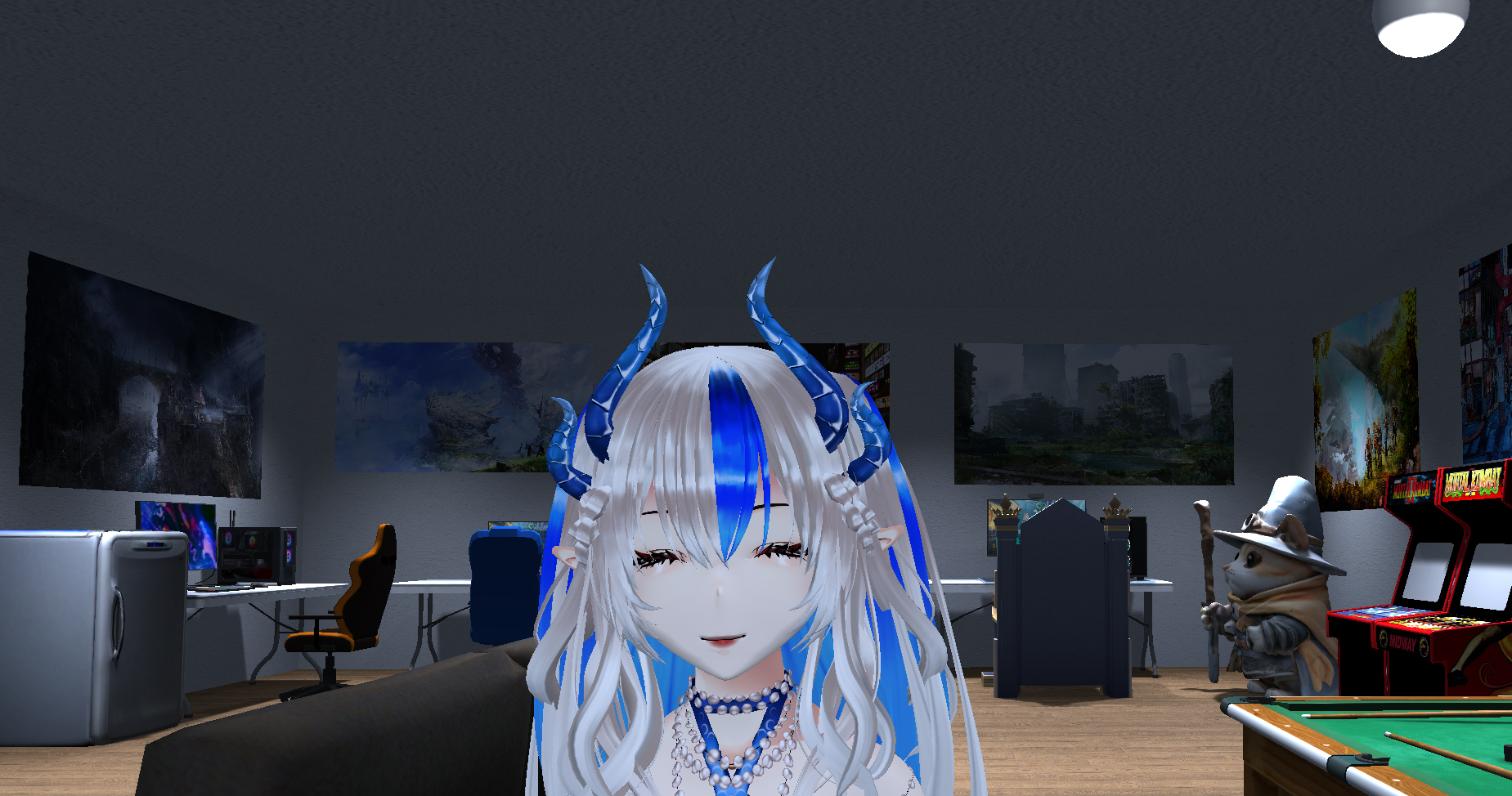 (credit: https://hub.vroid.com/en/characters/4241258680178962729/models/8368642706329814844)
(credit: https://hub.vroid.com/en/characters/4241258680178962729/models/8368642706329814844)
We've got even more cool stuff planned for the upcoming week, so keep your eyes peeled!
Thank you again for supporting us, and we hope you enjoy the new update! If you have any feedback or run into any issues, please let us know! Feel free to join our discord as well and don't hesitate to send me (Ryan) a DM if you want to discuss anything in detail: https://discord.gg/sySWBZ6F

Hi everyone! This is IndieCain, an indie developer who loves Lovecraftian games.
On May 7th, I decided to learn the Godot engine, which led to the creation of 'Herba Project'. Developed over less than two months, this is primarily my practice project - so yes, there are plenty of bugs! I'll be fixing whatever I can manage in future updates.
Special shoutout to Artist 又三 for his amazing support! He created all the beautiful crop illustrations. If we have the energy later, we might compile an artbook - it'd be pretty unique!
Back to the game: This is a Lovecraftian idle game where you play as a researcher conducting crop cultivation experiments. I'll be expanding this world in future releases, so stay tuned for 'Abyssal Echo' coming later this year!
Hope you all enjoy playing! For any issues or feedback, you can reach me on QQ or Discord. Love you guys! 💖


Broken Arrow launched last week and it’s been a tremendous success.
Hundreds of thousands of copies sold and the number of players in the game has never gone under 10.000 once since launch.
While no game is perfect, the response from the community has been incredible, and we’re just getting started.
We have been closely monitoring feedback and we know there are some points that stand out more than others:
Lack of a save game feature mid-mission in single player;
Problem with people leaving mid-game in multiplayer;
The anti-cheat system needs to be fine tuned and improved;
Some more issues with connectivity and stability;
In the first week the team has been hard at work to fix the most immediate problems, and they started addressing Skirmish mode, localizations and multiplayer stability.
We sat down with the developers to discuss what is coming next for Broken Arrow. The next patch is going to be 1.08 and it’s going to be a big one. Compared to the immediate hotfixes on launch week this update will be larger and will need more thorough testing, so we’re currently targeting the week of 7th July for its release.
Let’s have a look at what it is going to contain:
First off, improvements to stability, both offline and online;
Fix to the most significant problems related to memory consumption;
Reconnect fixes and improvements;
Update to the anti-cheat system;
The possibility to choose between a small or large layout for the maps has been added for custom matches and skirmish for players looking for smaller matches than 5v5. The game will automatically select the layout corresponding to the number of players+AI but you can also force one layout or the other;
The tower defense mode that was present during the beta is back and has been improved;
We will continue our work on fixing major issues, and overall improvements of the game client as well as server-side software.
We’re going to address the issue of the lack of a penalty for players who leave during a multiplayer match: we’re going to introduce a time-out system that will penalize leavers with progressively longer time-outs. Furthermore, we’re planning on introducing a Surrender option.
We’re not going to stop our fight with cheaters and we will continue working on improvements for our anti-cheat.
As for Save Games, we know it’s a highly requested feature. However, implementing it is more complex than it may appear. Currently we’re investigating our options to make your single player experience more convenient.
While it’s no secret that we’re planning on expanding the game with new factions and new DLCs, this post doesn’t focus on that. We have plans, but we’re not going to give any spoilers just yet.
As the devs are working on the update, we’ve prepared a list of solutions to some of the issues that players are currently facing. You can find it here.

Hey, Guardians!
We now have an official Discord server for Ancient Guardians: The Dragon!
This space was created for everyone following the game — to share suggestions, ask questions, or just hang out and talk about dragons and magic.
The game is still in development, and this is the perfect moment for those who want to share ideas, suggest improvements, and help shape what works (or doesn’t!).
We’re listening to everything: spells, balancing, difficulty, visuals, mechanics...
If you're enjoying the game or just curious about what's coming, join us on this journey!
We're just getting started — and every voice matters.
🎮 Feedback, bugs, ideas, memes... everything is welcome!
🔗 Join our server here:
Thanks for being part of this journey from the beginning.
See you there!
With love,
— Luphix 🖤